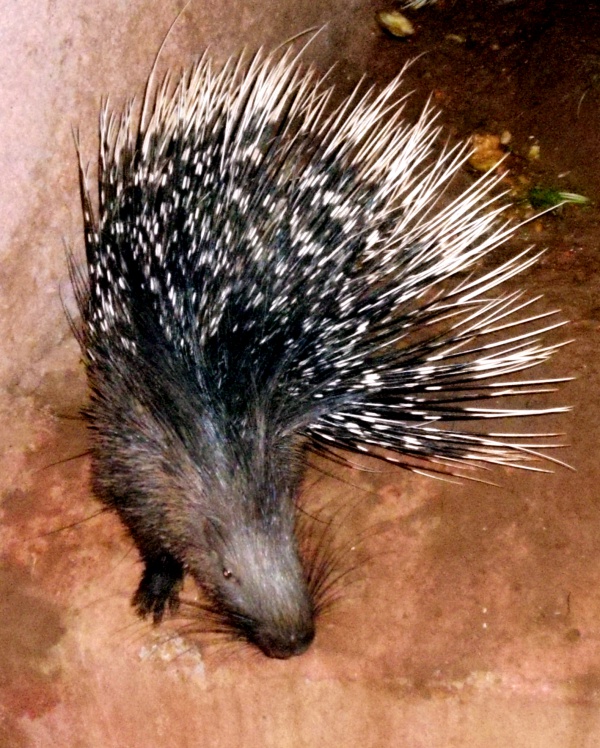Facts About Indian crested porcupine
The Indian crested porcupine, also known simply as the Indian porcupine, is a captivating rodent belonging to the Old World porcupine family, Hystricidae. This large and intriguing creature can be found across southern Asia and the Middle East.
These porcupines are notably robust, with a substantial build. Their body length typically ranges from 70 to 90 cm, and they weigh between 11 and 18 kg. Among their most distinguishing features are their quills, composed of keratin. When threatened, they can erect these quills as a defensive measure. The longest quills can extend up to 51 cm, supplemented by smaller, stiffer quills on their back and rump for added protection.
Indian crested porcupines inhabit a variety of environments, thriving in rocky hillsides, shrublands, grasslands, forests, and even gardens. Their diet is diverse, encompassing plant material, insects, and small vertebrates. These nocturnal animals spend approximately seven hours each night foraging for food. They are also semifossorial, living in natural caves or burrows, and are surprisingly proficient swimmers.
Their main predators include large cats, wolves, and humans. The mating season for these porcupines occurs in February and March, with a gestation period of about 240 days. Females typically give birth to 2 to 4 offspring annually, and the young are fully weaned within 13 to 19 weeks.
The Indian crested porcupine is currently categorized as Least Concern by the IUCN, due to its adaptability and stable populations. Nonetheless, they face threats from habitat loss due to urbanization and hunting for their meat and supposed medicinal properties.
Although sometimes considered pests, these porcupines play a crucial role in their ecosystems by aiding in seed and pollen dispersal. They are protected under the Indian Wildlife Protection Act, though illegal hunting persists. Fascinating research on their mating behavior and ecology has revealed their monogamous nature and distinctive activity patterns.

 India
India